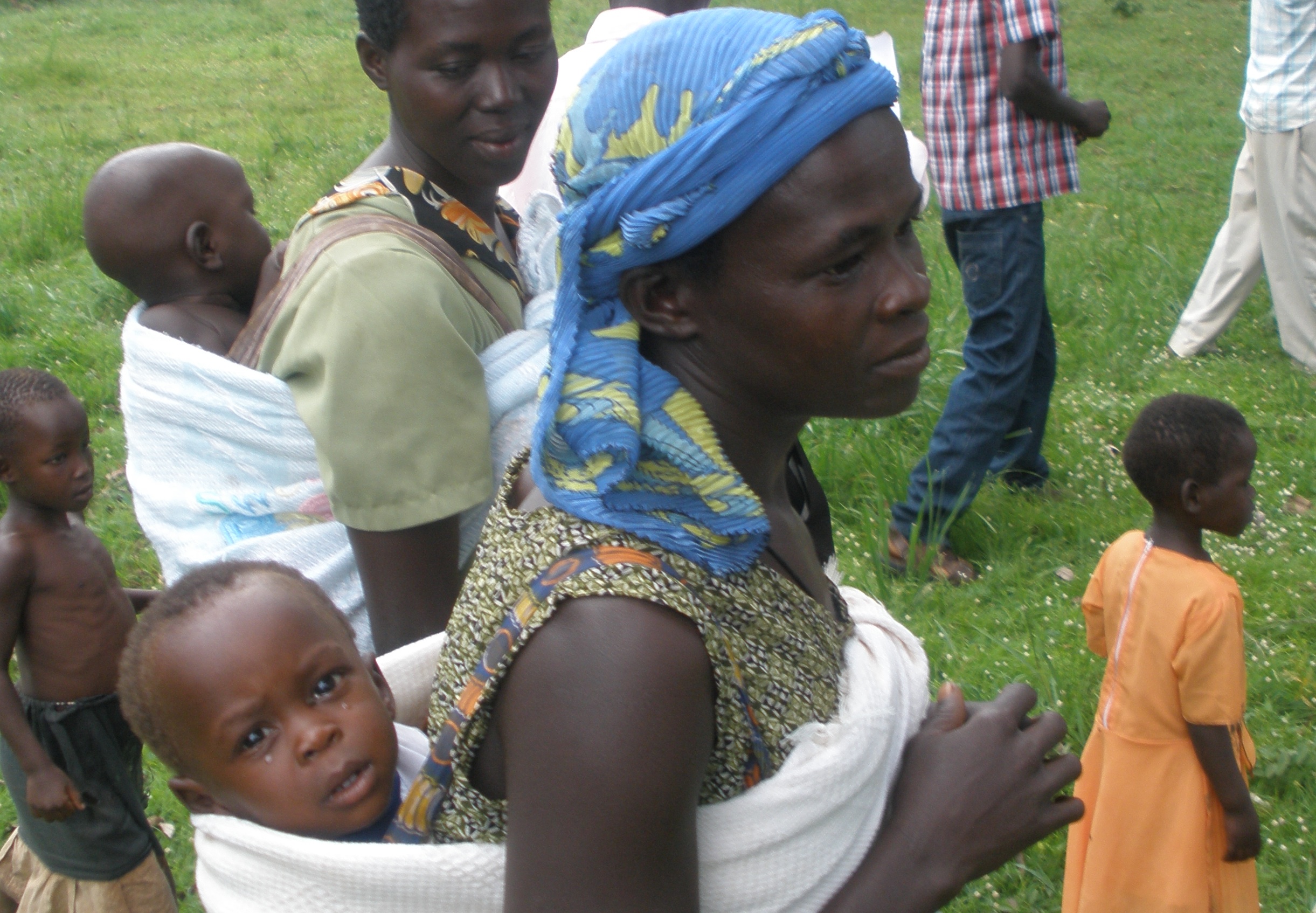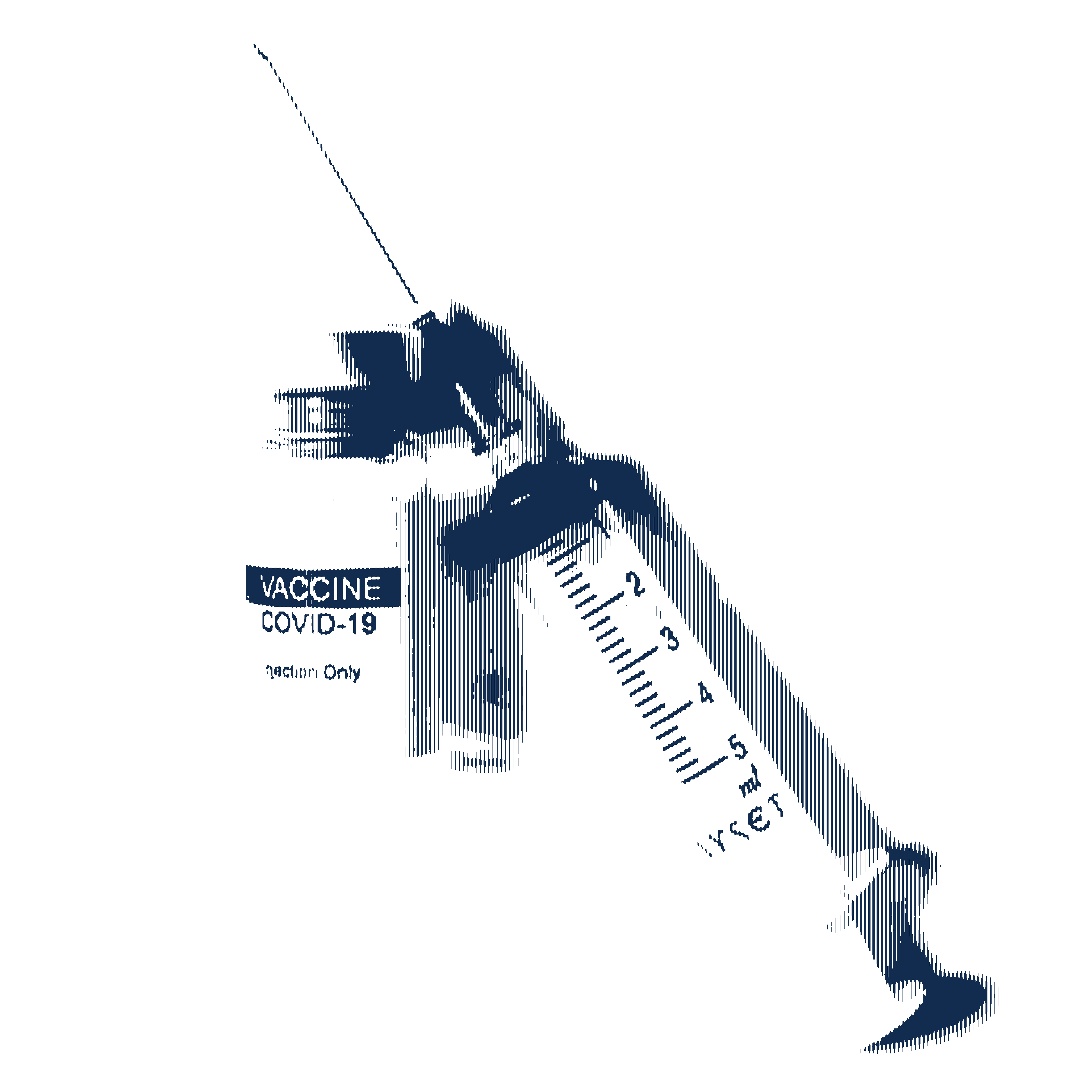
BARJWINYA, Uganda—In this tiny village in northern Uganda, Esther Okwir heard something she could barely believe: Her child could be the country's president one day.
Esther, a 22-year-old who was five months pregnant, sat on the cement floor of a veranda at the Ongica Health Center on a sweltering afternoon, squeezed under a tin awning with several dozen women who had come to the spartan clinic from miles around. About half of them were also pregnant, some poised to deliver any day, and the others cradled and breastfed newborn babies.
The 1,000-day period from the beginning of pregnancy to a child's second birthday "will determine the health of your child, the ability to learn in school, to perform at a future job," Susan Ejang, the midwife at the clinic, told the women, adding that proper nutrition for the mother and child, as well as good sanitation and hygiene, are vital to prevent stunting of the body and brain. She spread her arms wide, as if to embrace all the women on the porch. "Yes," she insisted, "if you take good care, the next president of the country may come from this group."
Esther had been dreaming a bit more modestly. She hoped her child would get a good education and be successful in business. But the president of the country? Well, why not? "That would really be something," she said.
The midwife's message—that in the first 1,000 days parents' ambitions for their children begin to be fulfilled, or dashed—has become one of the biggest new ideas in international development, as economists, academics, doctors, politicians, and aid workers discover the profound ways in which proper nutrition in the earliest years of life can influence an individual's ability to grow, learn, and work—and determine the long-term health and prosperity of families, nations, and the world as a whole.
In my reporting on the importance of the 1,000 days, which has taken me through India, Uganda, Guatemala, and the United States over the past year, I have heard nutritionists and health workers deliver the same messages to groups of mothers, whether gathered under trees or in living rooms. They come armed with colorful posters of food pyramids and nutrition guidelines, teach cooking methods that emphasize high-nutrient diets, and preach sound hygiene to ward off parasites and illnesses that sap the body of vital nutrients. I'm also seeing this basic education translate into action on a number of fronts: agriculturally (diversifying farming by growing more nutrient-rich crops for household consumption), domestically (maintaining cleaner living environments), and culturally (challenging ingrained behaviors such as the practice in many societies of women eating last at mealtime even when they are pregnant or breastfeeding).
In 2010, former U.S. Secretary of State Hillary Clinton and her Irish counterpart, Micheál Martin, launched the Scaling Up Nutrition (SUN) initiative and the 1,000 Days: Change a Life, Change the Future movement, an effort that unites governments, civil society, businesses, universities, foundations, and international humanitarian organizations to combat malnutrition. "Undernutrition is a major problem for which we have basic, affordable solutions," Clinton explained at the time. "Interventions after that second birthday make a difference, but often cannot undo the damage that was done because of the undernutrition during the first 1,000 days." Since then, 50 countries have joined the initiative, and I'm finding that the realities of SUN are dawning not only on mothers, but also on their husbands and mothers-in-law, who often dictate household behavior and child-rearing practices.
***
For years, ensuring good nutrition during the first 1,000 days was largely absent from national and global development priorities. Efforts to improve young lives and brighten future prospects focused on getting children into school, particularly primary school. One of the eight Millennium Development Goals adopted by UN members in 2000, for instance, calls for achieving universal primary education by 2015. It is in primary schools where interventions related to childhood nutrition, like free breakfast and lunch programs, usually begin.
But a growing body of research shows that success in primary school depends on good nutrition fueling cognitive development during the 1,000 days. In fact, addressing the malnutrition of the mother or child during this period—whether from a lack of food, micro-nutrient deficiencies, parasites, or illness—trumps most development and poverty-reduction efforts. The World Health Organization estimates that one in every four children under five years of age is stunted (defined as significantly below median height for a given age), and often this physical and mental damage is irreversible for the remainder of a person's life. Stunting as a child leads to reduced workplace productivity and income. Long-term studies of malnourished children in Guatemala, for example, have found that stunting can reduce hourly earnings in adulthood by 20 percent.
In 2012, a think tank called the Copenhagen Consensus Center convened some of the world's leading economists and development specialists to ponder a question: If they had an extra $75 billion to improve the state of the world, which problem would they solve first? The group declared that investments to eliminate hunger and malnutrition would do the world the greatest good. It found that improving child nutrition was also the most cost-effective intervention, with a return on investment of at least 30 to 1, depending on the country involved.
The Lancet, meanwhile, has published a series of articles that refine the target of those investments, zeroing in on the benefits of maternal and infant nutrition, particularly during the 1,000 days. The British medical journal estimated that 165 million children in the world suffer from stunted growth due to malnourishment, resulting in "compromised cognitive development and physical capabilities, making yet another generation less productive than they would otherwise be." Since stunted children become stunted adults, The Lancet concluded, "Countries will not be able to break out of poverty and sustain economic advances without ensuring that their populations are adequately nourished."
The consequences of stunting in the 1,000 days spread outward, from the individual (less education, lower earnings), to the family (one less full-wage earner), to the community (a diminished labor pool), to the nation (lower economic activity and growth), to the entire world (weaker global trade). Nations with high child-stunting rates—in more than 40 countries, at least 30 percent of children under five are stunted—calculate that they annually lose as much as 5 to 17 percent of their GDP due to lost productivity, reduced schooling, and high health costs, all of which stem from stunting that begins in the 1,000 days. In essence, malnutrition keeps poor countries poor.
Ethiopia, which has been plagued by a series of hunger crises over the past several decades, estimated in a recent report that two-thirds of its adult population suffered from stunting as children. According to the study's calculations, in 2009—25 years after the epic famine of 1984, when nearly 1 million people died of hunger—the cumulative impact of malnutrition on education levels and workplace productivity cost the country the equivalent of 16.5 percent of its GDP, or about $4.7 billion.
For me, the human face of these numbers is a boy I first met during the Ethiopian famine of 2003, when international food aid was keeping 14 million people alive. Hagirso was five years old and weighed just 27 pounds when his father, Tesfaye Ketema, carried him into an emergency feeding tent. Tesfaye explained that his son, who was sickly and weak and stunted, had been malnourished since birth and was the most vulnerable in the family when the famine hit. Hagirso miraculously survived, but his early malnourishment and the subsequent famine exacted a tremendous toll. When I visited him 10 years later, in April 2013, Hagirso was 15 and barely four feet tall. Tesfaye said his son was often sick and wasn't strong enough to do much work on the small family farm. Hagirso was in school, but only in the first grade. The day I visited, he and his much-younger classmates were studying the alphabet and pronouncing vowel-consonant combinations: ba, be, bi, bo, bu. There, in that classroom, was confirmation of all the statistics on the cost of malnutrition and stunting: lost education, lost work, lost wages, lost opportunity.
And malnutrition isn't confined to the poorer precincts of the planet. India, for all its billionaire businessmen, high-tech progress, and Bollywood glamor, has some of the world's highest stunting and malnutrition rates; about 48 percent of its children younger than five have low height for their age and about 42 percent have low weight for their age.
In the United States, researchers and politicians are studying connections between poor nutrition in the 1,000 days and poor school performance, as well as increasing rates of obesity and diabetes. When he hosted a Scaling Up Nutrition summit in 2012, Chicago Mayor Rahm Emanuel estimated that as many as 500,000 of the city's citizens could be living in "food deserts" without nearby access to affordable vegetables, meat, and fresh fruits, leading to unhealthy diets centered on cheaper junk food and readily available fast food. It is in the 1,000 days, he noted, where the city's social problems begin: failing health and, by extension, failing students and schools; a weakened labor force; and high crime rates. His "Healthy Chicago" initiative includes innovations such as dedicated "baby-friendly" hospitals that encourage breastfeeding, a plan to turn derelict, empty lots into farms to break up food deserts, and educational outreach that teaches the basics of good nutrition.
Globally, the UN's Food and Agriculture Organization estimates that malnutrition and stunting costs $1.4 trillion to $2.1 trillion a year, the equivalent of 2 to 3 percent of global GDP in lost economic productivity.
On top of all this comes an opportunity cost that can't be measured: the loss of so much potential individual innovation. What might a child have contributed to the world had he or she not been stunted during the 1,000 days?
***
Which brings us back to the dreams of mothers, who, I'm finding, share a universal ambition: good education for their children.
Esther Okwir considers herself lucky, in that she's bearing her first child at a time when Uganda has made improving nutrition and reducing stunting a top national priority. She knows that many mothers before her didn't have the luxury of dreaming—especially in northern Uganda, where for two decades Joseph Kony and the Lord's Resistance Army unleashed murderous mayhem, abducting thousands of children to serve as soldiers and sex slaves.
The country was long crippled by malnutrition. A decade into the 21st century, Uganda's under-five death rate of 90 per 1,000 live births, with many of these deaths attributed to malnutrition, was among the worst in the world. Of the children who survived, nearly 40 percent were stunted. Three-quarters of the country's children under five (and half of all women of child-bearing age) suffered from iron deficiency anemia. Severe vitamin A deficiency plagued 20 percent of all women and children, compromising their immune systems. Mere survival was the goal. Who could dare dream of greatness for their child?
And then Uganda joined the SUN movement. Sam Kutesa, the country's foreign minister, stood beside Hillary Clinton during the launch of the initiative in 2010. "Undernutrition in Uganda and in Africa is a price too high for us to neglect," he said, while unveiling his government's National Development Plan, which had improving nutrition in the 1,000 days as its cornerstone.
This new emphasis is on display in Uganda's health centers, where nutrition education is now central to prenatal care. A network of community organizations is taking the message into villages with songs and skits. The country has also become a prominent pioneer in growing biofortified crops—staple foods developed by the HarvestPlus initiative that contain higher nutrient levels to strengthen immune systems and combat anemia. Esther herself is on the frontlines of this effort; the day before the gathering at the health center, she was in her field tending to orange-flesh sweet potatoes rich in vitamin A and beans with a higher-than-normal iron level. The timing couldn't have been better, since the harvest was set to coincide with the birth of her child. The vitamin A and iron would help keep her strong and give her baby a good start in life, while the nutrients would enrich her breast milk and then the baby's first solid food of mashed-up sweet potatoes and beans.
In the rural Indian village of Barjor Khera, two young mothers—sisters-in-law, both illiterate—sat on a crude stoop between their humble houses. Together, they had been attending gatherings of the Community Empowerment Lab, which emphasized the benefits of changing long-held cultural behaviors that have contributed to high infant-mortality and child-stunting rates. These lessons included delivering their babies in hospitals rather than at home, immediately beginning breastfeeding rather than discarding the nutrient-rich colostrum and first milk, and embracing skin-to-skin "kangaroo mother care" rather than keeping the baby at a distance shortly after birth. Now the sisters-in-law were dreaming big. Seema Kumar cradled her two-month-old daughter, Priyanshi, in her arms. "I wish for her a good education and a good job," she said. "And a good marriage." Sanju Kumar's son, Adarsh, was born 13 days after Priyanshi. "I want him to be a wise person," Sanju said. "He will need a good education."
On the south side of Chicago, Jessica Saldana admired her six-day-old daughter, Alitzel, who was sleeping in her arms. During her pregnancy, she soaked up the advice from the home-visitation program of a community organization called the Ounce of Prevention Fund, which included scrapping her teenage diet of junk food in favor of fresh fruit and vegetables. "I see her being an honor student," Jessica said of her daughter. Still in high school herself, Jessica added, "I see her playing sports like me. And there will be music in her life, maybe playing the violin. It's all part of a good education."
In Guatemala's Palajunoj Valley in the western highlands, where the government acknowledges child malnutrition rates approaching 70 percent, Maria Delfina Camacho heeded the nutrition advice and cooking lessons—how to make vitamin- and mineral-rich cream of potato soup and carrot stew—of nutritionist Susy Menchu Tacam of the Primeros Pasos (First Steps) clinic. And she delivered a healthy son: Jose Alexander weighed nearly seven pounds at birth, far above average in the country, where low birth weights are common and a precursor to stunting. Maria's motivation, and her wish for Jose, is that he will get the education she never did. She only made it to the sixth grade. "I wanted to go further," she said. "But I couldn't. I hope Jose will."
Susy smiled at her student. "Jose is off to a good start, you saw to that," Susy told Maria. "Keep it up and he can go far."







